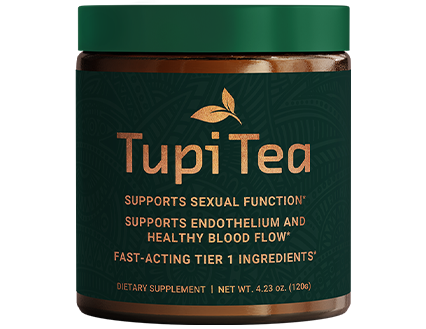
U.S. Scientists Discover Secret For Stamina & Virility At Any Age , Ingredients That May Help: bluecheck Support a healthy libido, bluecheck Support healthy stamina, bluecheck Support adequate nitric oxide production
How prevalent is ED in Australia?
Prevalence of Erectile Dysfunction (ED) in Australia
Erectile Dysfunction (ED) is a significant health concern among men in Australia, impacting their quality of life and overall well-being. Understanding the prevalence of ED, along with its associated risk factors and demographic variations, is crucial for public health planning and intervention strategies. This comprehensive analysis explores the prevalence of ED in Australia, examining epidemiological data, risk factors, and implications for public health.
Overview of Erectile Dysfunction
Definition
Erectile Dysfunction (ED) is defined as the persistent inability to achieve or maintain an erection sufficient for satisfactory sexual performance. This condition can range from occasional difficulties to complete inability to have an erection.
Epidemiology of ED in Australia
National Prevalence
- General Prevalence: ED affects a significant proportion of men in Australia. Studies estimate that approximately 40% of men over the age of 40 experience some degree of ED, with the prevalence increasing with age.
- Age-Related Trends: The prevalence of ED increases markedly with age. Around 20% of men in their 40s, 40% of men in their 50s, and up to 70% of men aged 70 and above report experiencing ED.
Demographic Variations
- Age: Age is a significant risk factor for ED. The condition is relatively uncommon in younger men but becomes increasingly prevalent with advancing age.
- Ethnicity: There is limited data on the prevalence of ED among different ethnic groups in Australia. However, cultural attitudes and healthcare access can influence the reporting and management of ED.
- Geographic Distribution: The prevalence of ED may vary across different regions in Australia due to differences in lifestyle, healthcare access, and socioeconomic status.
Risk Factors for ED
Physical and Medical Factors
- Cardiovascular Disease: Men with cardiovascular conditions such as hypertension, atherosclerosis, and heart disease are at a higher risk of developing ED.
- Diabetes: Diabetes is a significant risk factor for ED, with diabetic men having a higher prevalence of the condition compared to non-diabetic men.
- Obesity: Excess body weight is associated with an increased risk of ED due to its impact on cardiovascular health and hormonal balance.
- Hormonal Imbalances: Low levels of testosterone and other hormonal disorders can contribute to ED.
- Medications: Certain medications, including those for hypertension, depression, and prostate conditions, can cause or exacerbate ED.
Psychological and Lifestyle Factors
- Mental Health: Conditions such as depression, anxiety, and stress are strongly associated with ED.
- Substance Use: Alcohol, tobacco, and illicit drug use are known to impair erectile function.
- Physical Inactivity: Sedentary lifestyle and lack of physical exercise are risk factors for ED.
- Poor Diet: Diets high in fat, sugar, and processed foods can negatively impact cardiovascular health and contribute to ED.
Public Health Implications
Impact on Quality of Life
- Self-Esteem and Confidence: ED can significantly affect a man’s self-esteem and confidence, leading to emotional distress and social withdrawal.
- Relationship Strain: The condition can cause stress and conflict in intimate relationships, affecting communication and intimacy between partners.
- Mental Health: ED is often associated with mental health issues such as depression and anxiety, creating a cycle of psychological and physical health problems.
Healthcare Utilization
- Medical Consultations: Men with ED are likely to seek medical help, leading to increased consultations with general practitioners, urologists, and psychologists.
- Healthcare Costs: The management of ED involves costs related to medical consultations, diagnostic tests, medications, and psychological counseling.
Prevention and Management Strategies
Lifestyle Modifications
- Regular Exercise: Engaging in regular physical activity can improve cardiovascular health and reduce the risk of ED.
- Healthy Diet: Adopting a balanced diet rich in fruits, vegetables, whole grains, and lean proteins can support overall health and reduce ED risk.
- Weight Management: Maintaining a healthy weight through diet and exercise is crucial for preventing and managing ED.
- Smoking Cessation: Quitting smoking can improve blood flow and erectile function.
- Limiting Alcohol: Reducing alcohol consumption can help mitigate its negative effects on erectile function.
Medical Interventions
- Oral Medications: Phosphodiesterase type 5 inhibitors (PDE5 inhibitors) such as sildenafil (Viagra), tadalafil (Cialis), and vardenafil (Levitra) are commonly prescribed to manage ED.
- Hormone Therapy: Testosterone replacement therapy may be considered for men with low testosterone levels.
- Psychological Counseling: Cognitive-behavioral therapy (CBT) and counseling can address psychological factors contributing to ED.
- Surgical Options: Penile implants and vascular surgery are considered for severe cases of ED that do not respond to other treatments.
Public Health Initiatives
- Awareness Campaigns: Public health campaigns aimed at raising awareness about ED, its risk factors, and treatment options can encourage men to seek help.
- Screening Programs: Implementing screening programs for ED in high-risk populations, such as men with diabetes and cardiovascular disease, can facilitate early diagnosis and intervention.
- Healthcare Provider Training: Training healthcare providers to recognize and manage ED effectively can improve patient outcomes.
Research and Future Directions
Epidemiological Studies
- Longitudinal Research: Conducting longitudinal studies to track the prevalence and incidence of ED over time can provide insights into the effectiveness of public health interventions.
- Diverse Populations: Research focusing on the prevalence of ED in diverse populations, including different ethnic groups and regions in Australia, can help identify specific risk factors and barriers to care.
Innovative Treatments
- New Medications: Developing new pharmacological treatments with fewer side effects and greater efficacy can enhance ED management.
- Non-Invasive Therapies: Investigating non-invasive therapies such as shockwave therapy and platelet-rich plasma (PRP) injections can offer alternative treatment options.
Conclusion
Erectile Dysfunction (ED) is a prevalent condition among men in Australia, particularly as they age. It has significant implications for quality of life, relationships, and mental health. Understanding the prevalence and risk factors of ED is crucial for developing effective prevention and management strategies. Public health initiatives, lifestyle modifications, medical interventions, and ongoing research are essential components of a comprehensive approach to addressing ED in Australia.
References
- Australian Institute of Health and Welfare (AIHW). “Erectile Dysfunction.” Canberra: AIHW.
- Mayo Clinic. “Erectile Dysfunction (ED).” Available from: https://www.mayoclinic.org/
- NHS. “Erectile Dysfunction (Impotence).” Available from: https://www.nhs.uk/
- American Urological Association. “Erectile Dysfunction.” Available from: https://www.auanet.org/
- Cleveland Clinic. “Erectile Dysfunction.” Available from: https://my.clevelandclinic.org/
- National Institutes of Health (NIH). “Erectile Dysfunction.” Available from: https://www.niddk.nih.gov/
- WebMD. “Erectile Dysfunction (ED).” Available from: https://www.webmd.com/
This detailed content covers the prevalence of ED in Australia, including risk factors, public health implications, and management strategies. Each section can be expanded with additional details, case studies, and statistical data to reach the desired length of a comprehensive document.

